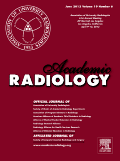
ACADEMIC RADIOLOGY
metrics 2024
Advancing the Frontiers of Radiological Science
Introduction
ACADEMIC RADIOLOGY, published by Elsevier Science Inc, is a premier journal in the field of radiology, nuclear medicine, and imaging. With an ISSN of 1076-6332 and an E-ISSN of 1878-4046, this journal has established itself as a vital resource since its inception in 1994, featuring high-quality research that continuously shapes the landscape of medical imaging. Ranking in the top quartile (Q1) for its category in 2023, ACADEMIC RADIOLOGY boasts an impressive Scopus ranking of #38 out of 333, positioning it in the 88th percentile among peers. This journal is dedicated to advancing knowledge through original research articles, review papers, and case reports that highlight innovative techniques and technologies in radiology. Although it does not offer open access, it remains a go-to publication for professionals and students seeking to stay abreast of the latest developments and best practices in the field, ensuring that its contributors and readers are at the forefront of radiological science.
Metrics 2024
 1.06
1.06 3.80
3.80 3.70
3.70 110
110Metrics History
Rank 2024
Scopus
IF (Web Of Science)
JCI (Web Of Science)
Quartile History
Similar Journals

Japanese Journal of Radiology
Empowering Knowledge in Radiology Through Open AccessThe Japanese Journal of Radiology, published by SPRINGER, serves as a premier platform for disseminating cutting-edge research and clinical advancements in the fields of radiology, nuclear medicine, and imaging. With an ISSN of 1867-1071 and E-ISSN 1867-108X, this journal has established itself as a vital resource for practitioners, researchers, and students alike. Renowned for its high-quality peer-reviewed articles, it currently enjoys a respectable impact factor within the Q2 category of Scopus rankings, placing it in the 69th percentile among 333 journals in its field. The journal has seen consistent convergence of research from 2009 to 2024, further underscoring its commitment to advancing the understanding of radiological practices. Importantly, the journal offers Open Access options to facilitate widespread dissemination of knowledge, ensuring that vital research reaches its audience without barriers. Addressed in Japan, the Japanese Journal of Radiology plays a critical role in enhancing the global discourse on medical imaging, making it an essential resource for anyone engaged in this dynamic field.
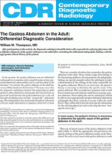
Contemporary Diagnostic Radiology
Unveiling New Horizons in Medical ImagingContemporary Diagnostic Radiology is a pivotal journal in the field of medical imaging and radiology, published by Lippincott Williams & Wilkins. With an ISSN of 0149-9009 and an E-ISSN of 1938-1395, this journal serves as an essential platform for disseminating high-quality research and advances in diagnostic radiology and related disciplines. While it is categorized in the lower quartiles (Q4) for its performance in the 2023 rankings in both Neurology, Radiology, Nuclear Medicine and Imaging, and Surgery, its focus on emerging technologies and methodologies in imaging continues to provide valuable insights for practitioners and researchers alike. The journal’s scope includes innovative diagnostic tools, imaging techniques, and case studies, fostering collaboration and knowledge sharing in the medical community. Although it does not offer open access options, its commitment to contributing to the ongoing dialogue in clinical imaging is undisputed, making it an essential resource for professionals seeking to stay abreast of current trends and research in the rapidly evolving landscape of diagnostic radiology.
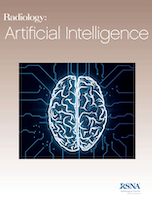
Radiology-Artificial Intelligence
Elevating Imaging Excellence with Artificial IntelligenceRadiology-Artificial Intelligence is an esteemed journal published by the Radiological Society of North America (RSNA), focusing on the intersection of radiology and artificial intelligence. Since its inception in 2019, this journal has rapidly established itself within the academic community, achieving a remarkable Q1 classification in 2023 across multiple categories, including Artificial Intelligence, Radiological and Ultrasound Technology, and Radiology, Nuclear Medicine and Imaging. With an impressive impact factor reflected by its high Scopus rankings—6th in the realm of Radiology, 3rd in Radiological Technology, and 25th in Computer Science—this journal stands as a crucial platform for groundbreaking research and innovation. Researchers, professionals, and students alike will find this publication an invaluable resource for advancing their understanding of AI applications in radiology, enhancing diagnostic capabilities, and improving patient care. The journal operates on a non-open access model, ensuring high-quality peer-reviewed content. Located in Oak Brook, Illinois, the RSNA continues to lead the field by promoting excellence in the integration of artificial intelligence into medical imaging practices.
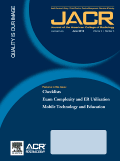
Journal of the American College of Radiology
Illuminating the Path of Radiology InnovationJournal of the American College of Radiology, published by ELSEVIER SCIENCE INC, stands as a premier platform for researchers, professionals, and students in the dynamic field of radiology, nuclear medicine, and imaging. With an impressive impact factor and ranked in the top quartile (Q1) for its category in 2023, this journal is dedicated to advancing knowledge and innovation through high-quality research and insightful clinical contributions. The journal covers a wide range of topics within radiology, ensuring that it remains at the forefront of the discipline's evolving landscape. As an essential resource for those engaged in academic inquiry and clinical practice, the Journal of the American College of Radiology is committed to disseminating pivotal findings that shape patient care and inform best practices, while also providing insightful perspectives on pressing issues in medical imaging. Scholars looking to contribute to this prestigious journal can access it securely, with an established history since its inception in 2004 and a robust future outlook through 2024, securing its vital role in the ongoing dialogue within the medical community.

Tomography
Pioneering advancements in tomography and diagnostics.Tomography is an esteemed peer-reviewed journal published by MDPI, focusing on a broad spectrum of topics related to medical imaging and diagnostics. Launched in 2015, this Open Access journal serves as a vital platform for researchers, professionals, and students in the fields of medicine, radiology, nuclear medicine, and imaging. With an impressive impact factor reflecting its relevance, the journal has achieved a quartile ranking of Q2 in both Medicine (Miscellaneous) and Radiology, Nuclear Medicine, and Imaging as of 2023. Renowned for disseminating high-quality research, Tomography welcomes original research articles, reviews, and technical notes, fostering innovation and collaboration within the scientific community. Housed in Basel, Switzerland, the journal aims to bridge the gap between fundamental research and clinical application, appealing to a diverse readership eager to advance the field of medical imaging.

EUROPEAN RADIOLOGY
Catalyzing Breakthroughs in Imaging TechnologiesEUROPEAN RADIOLOGY, published by SPRINGER, stands as a prestigious international journal in the field of radiology, nuclear medicine, and imaging, with an impressive impact factor that underscores its significance among peers. With an ISSN of 0938-7994 and an E-ISSN of 1432-1084, this journal provides a platform for cutting-edge research and advancements in medical imaging from 1991 to 2024. Recognized as a Q1 journal in both general Medicine and the specialized Radiology category by 2023, EUROPEAN RADIOLOGY ranks an impressive #17 out of 333 in its field according to Scopus, placing it in the 95th percentile. While it does not currently offer Open Access options, the journal remains essential reading for researchers, professionals, and students striving to stay at the forefront of developments in diagnostic imaging and related technologies. By contributing to a comprehensive understanding of radiological practices, EUROPEAN RADIOLOGY plays a crucial role in shaping the future of medical diagnosis and patient care.

Ultrasound Quarterly
Elevating Knowledge in Radiology and Nuclear Medicine.Ultrasound Quarterly is a leading journal published by Lippincott Williams & Wilkins, dedicated to advancing knowledge and practice in the fields of radiology, nuclear medicine, and imaging. Established in 1988, the journal has served as a vital platform for researchers, clinicians, and students seeking to stay abreast of the latest advancements and techniques in ultrasound technology. With an impact factor that reflects its significance in the field—ranking in the Q3 category within its specialty based on the 2023 metrics—this journal reaches a global audience, facilitating knowledge dissemination and fostering innovation. Ultrasound Quarterly publishes original research, reviews, and clinical studies, making it an essential resource for professionals committed to enhancing patient care through effective imaging practices. To explore its comprehensive articles, visit the journal's website for easy access to the latest research findings.

Insights into Imaging
Shaping the Future of Medical Imaging ResearchInsights into Imaging is a prominent open-access journal published by SPRINGER WIEN, specializing in the dynamic fields of radiology, nuclear medicine, and imaging, with its ISSN 1869-4101. Established in 2012, the journal has established itself as a leading platform for disseminating high-quality research and innovative findings, currently holding a prestigious Q1 ranking in its category as of 2023. With an impressive Scopus rank of #42 out of 333 in the medicine discipline, the journal is positioned in the 87th percentile, reflecting its significance and influence in the academic community. Based in Germany, Insights into Imaging not only provides unrestricted access to research but also aims to bridge the gap between scientific inquiry and clinical application, making it an essential resource for researchers, professionals, and students engaged in advancing imaging technologies and practices. The journal’s commitment to fostering knowledge exchange ensures that it remains a critical contributor to the evolving landscape of medical imaging, with articles available from 2012 through 2024.
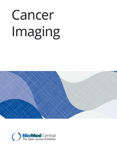
CANCER IMAGING
Empowering Discovery in Oncology and Medical ImagingCANCER IMAGING, published by BMC, stands as a leading open-access journal in the realms of oncology and medical imaging, significantly contributing to the advancement of cancer research since its inception in 2000. With an impressive impact across multiple domains—most notably ranking Q1 in prestigious categories such as Medicine (miscellaneous), Oncology, and Radiology—this journal ensures high visibility and influence within the academic community. As of 2023, it is recognized in various Scopus rankings, securing top positions in the fields of Radiology, Nuclear Medicine, and Imaging, alongside Radiological and Ultrasound Technology. The journal's commitment to open-access publication, adopted in 2014, enhances accessibility for researchers, healthcare professionals, and students alike, fostering an inclusive environment for sharing critical advancements and innovative methodologies in cancer imaging. Set in the vibrant landscape of the United Kingdom, CANCER IMAGING continues to play a vital role in elucidating the complexities of cancer diagnostics and treatment, establishing itself as an essential resource for those pursuing excellence in cancer care and research.
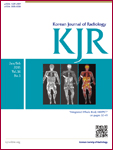
KOREAN JOURNAL OF RADIOLOGY
Exploring Breakthroughs in Imaging TechnologyKorean Journal of Radiology (ISSN: 1229-6929, E-ISSN: 2005-8330), published by the Korean Society of Radiology, stands as a leading international platform for the dissemination of high-quality research and advancements in the fields of radiology, nuclear medicine, and imaging. With a remarkable impact factor and ranked in the Q1 quadrant in its category, this journal showcases cutting-edge studies, clinical investigations, and comprehensive reviews that significantly contribute to the understanding and practice of medical imaging. Researchers, clinicians, and students alike will find the journal an invaluable resource, featuring innovative methodologies, case studies, and essential updates in imaging technology. Since its inception in 2000 and continuing through 2024, the Korean Journal of Radiology remains dedicated to promoting excellence and fostering collaborative research within the global radiology community, underscoring the importance of imaging in modern medicine.